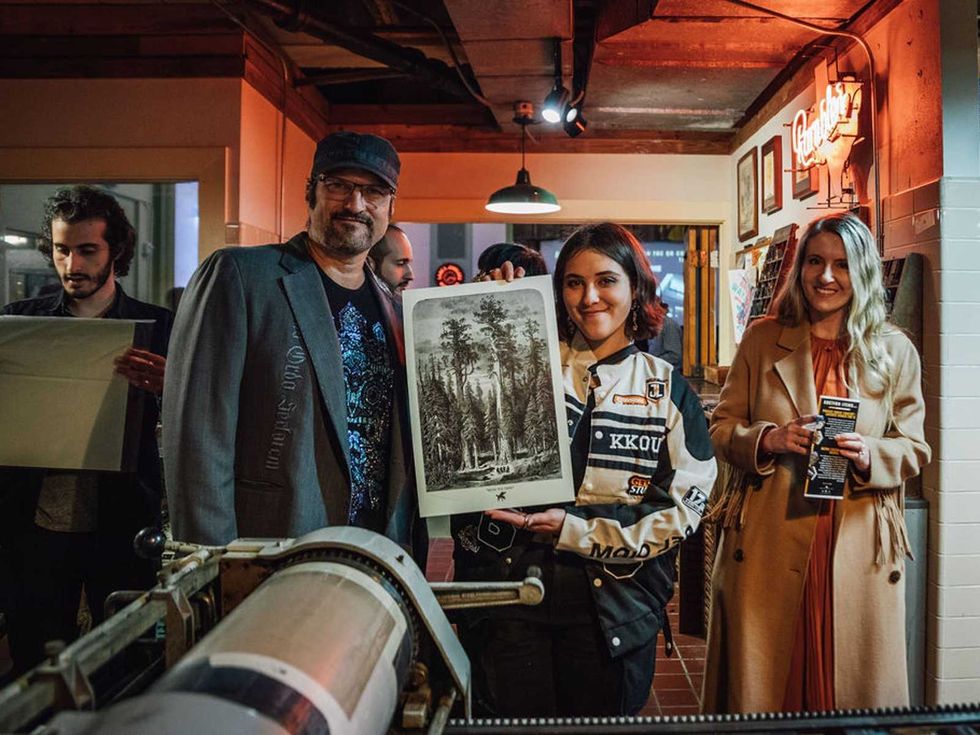A Writer's Life
When you know you're going to be judged: Picking the perfect cover for your book
 Natural Selections
Natural Selections The Book of Faces
The Book of Faces Joseph CampanaCourtesy Photo
Joseph CampanaCourtesy Photo
I know I shouldn’t judge a book by its cover, but I can’t help it.
Of course, the book in question is mine. As for the cover, I just love it.
A literary life is full of frustrations ranging from writer’s block to revision snags to publication blues. It’s a relief when the long toil finally pays off. My second book of poems, Natural Selections, came out just in time for April, National Poetry Month. And I can tell you, nothing is as sweet as holding in your hands the thing itself: the finally-published book.
Even sweeter? The ideal cover.
Selecting a cover is a challenge because the stakes are high. Who wants his book passed by, unloved, because it presents a homely face to the world?
Covers are usually the first things we see. Even in an age of eBooks and Nooks, we still pass shop windows (of the bookstores that are left) to be captivated by a dynamic design or a mysterious image. In spite of the ever-more crystalline screens of e-readers, a beautiful cover is more beautiful when it can be seen and touched.
How do books get their covers? Each press is different, but if you’re lucky, your publisher asks you what you want even though they always hold the power of veto.
I was lucky twice. But as they say, be careful what you wish for.
Selecting a cover is a challenge because the stakes are high. Who wants his book passed by, unloved, because it presents a homely face to the world?
My first book of poetry, The Book of Faces, beautifully published by Graywolf Press. This is a book about Audrey Hepburn, the icons of the silver screen, and what it means to fall in love with movies. It needed a cover that was elegant, evocative and iconic. The suggested images were all intriguing, two were thrilling, and one was a home run.
A pair of black eyelashes curls toward the viewer in front of a mysterious blue background. Someone you can’t see is dressing or undressing — maybe getting ready for a party. But you never see who it is.
This was much better than my original desire: an image of Audrey Hepburn. The Audrey Hepburn estate did me a huge favor in saying “no thank you we’d rather you not” with a Hepburn-like elegance. What was I thinking? The image was too literal, but I had trouble seeing that at first.
This time around I was even luckier. The University of Iowa Press published my book as one of the two winners of the 2011 Iowa Poetry Prize, and they were very open to suggestion, as was Graywolf. This time, however, I knew what I wanted.
Natural Selections is about the intensity and oddity of rural life, and I wrote most of the poems a few years ago when I was living in central Ohio teaching at Kenyon College. It was lush and desolate all at the same time, and I was struck by the country roads I constantly drove and the abundant animals. Hare, fawn, and crow: I almost felt like they were talking to me.
The book needed a suitable cover, something as stark and mysterious as the landscape I was in. Thank goodness for Grant Wood.
You’ll know Iowan Grant Wood, one of the most important American regionalists of the 20th century, from his iconic American Gothic, which is utterly singular and must be one of the most parodied paintings in the world. The Grant Wood I love appears simple but the perspectives are extreme and, for lack of a better term, bent. Nothing simple is really simple, especially small-town life.
So I scoured the Internet for images especially at the Cedar Rapids Museum of Art in Iowa. I remembered my college days when I would go to the Williams College Museum of Art to see the eerie Death on Ridge Road. I sought out Parson Weems’ Fable at the Amon Carter Museum of American Art in Fort Worth. I read Grant Wood: A Life, a fine biography of the complex life of Grant Wood by R. Tripp Evans.
Natural Selections is about the intensity and oddity of rural life, and I wrote most of the poems a few years ago when I was living in central Ohio teaching at Kenyon College.
Finally and fortuitously, I found the one I wanted: March, a lithograph from a calendar series Wood completed. A wide road winds sharply up a hill as it narrows in the distance. A small horse and wagon approach a tiny house on a hill. There’s something so odd, so inviting about March. What's marvelous about Sara T. Sauers design is how the speckled gray background makes the image both pop and draw you in.
I was certain it was the one. How to make it happen? I didn’t know much about image permissions at that point, but luckily, I didn’t even have to leave home. In one of those utterly serendipitous moments, I was discussing some arts coverage of the Museum of Fine Arts in Houston with curator Emily Neff, who was kind enough to ask me about my life as a poet.
I said, “I’ve finished a book. I don’t have a publisher yet, but I definitely have a cover.”
When I described the Grant Wood image I was dreaming of, she said simply, “Oh, we have that.”
And so, my cover was born. After a trip to the MFAH print room to see the Grant Wood lithograph (along with three other works of his they own), I was even more certain.
Happily, too, the MFAH will launch my book in Houston at a poetry salon Wednesday at 6:30 p.m. in the Beck Building, featuring a talk on Grant Wood and American regionalism by Emily Neff.
In the six years I’ve lived here, I’ve found Houston incredibly welcoming. The serendipity of this story is, for that reason, no surprise at all. In that spirit, dear readers, I’d like to invite you all to the reading to judge my book’s cover to just to enjoy Grant Wood and a glass of wine.
I’ll promise I’ll write something just for that occasion.

 Earlier Luck on the Lawn event this year at the Hotel Magdalena.Photo from Hotel Magdalena
Earlier Luck on the Lawn event this year at the Hotel Magdalena.Photo from Hotel Magdalena Print press production at the Press Room at the Baker Center.Photo courtesy of the Baker Center
Print press production at the Press Room at the Baker Center.Photo courtesy of the Baker Center Creations by Colleen, one of the vendors at Holiday Artisan Market.Photo courtesy of Creations by Colleen
Creations by Colleen, one of the vendors at Holiday Artisan Market.Photo courtesy of Creations by Colleen Photos from the Merry Market Austin event in December 2024.Photo by Katlyn Gitzen. Graphics by Kate Donovan
Photos from the Merry Market Austin event in December 2024.Photo by Katlyn Gitzen. Graphics by Kate Donovan Bee Cave on Ice, sponsored by the City of Bee Caves, at the Hill Country Galleria.Photo courtesy of the City of Bee Cave
Bee Cave on Ice, sponsored by the City of Bee Caves, at the Hill Country Galleria.Photo courtesy of the City of Bee Cave Koko's Beer Hall will offer holiday-themed drinks this month to celebrate the holiday season.Photo by Chad Wadsworth
Koko's Beer Hall will offer holiday-themed drinks this month to celebrate the holiday season.Photo by Chad Wadsworth